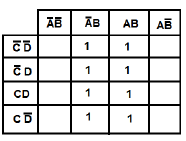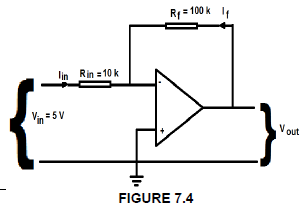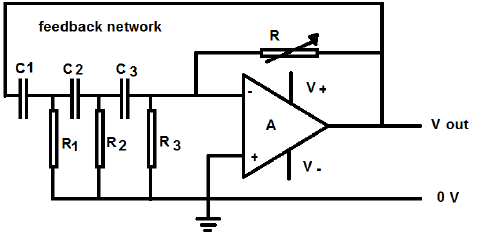ELECTRICAL TECHNOLOGY GRADE 12 QUESTIONS - NSC PAST PAPERS AND MEMOS SEPTEMBER 2016
Share via Whatsapp Join our WhatsApp Group Join our Telegram GroupELECTRICAL TECHNOLOGY
GRADE 12
NATIONAL SENIOR CERTIFICATE
SEPTEMBER 2016
INSTRUCTIONS AND INFORMATION
- Answer ALL the questions.
- Sketches and diagrams must be large, neat and fully labelled.
- ALL calculations must be shown and rounded off to TWO decimal places.
- Number the questions correctly according to the numbering system used in this question paper.
- Start EACH question on a NEW page.
- Non-programmable calculators may be used.
- A formula sheet is provided at the end of this question paper.
QUESTION 1: OCCUPATIONAL HEALTH AND SAFETY
1.1 Burns caused by flames or even hot liquids can be very unpleasant and must therefore be treated correctly.
Explain TWO steps to be taken when someone experiences minor burns. (2)
1.2 Name at least THREE aspects which plays a role in work ethics. (3)
1.3 Explain why it is important to have sufficient lighting in an electrical technology workshop. (1 x 2) (2)
1.4 Describe why a risk analysis must be done to improve safety in an electrical technology workshop. (3)
[10]
QUESTION 2: THREE-PHASE AC GENERATION
2.1 Describe the purpose of a power factor meter in an AC circuit. (2)
2.2 List TWO environmentally friendly methods of generating alternating current in South Africa. (2)
2.3 A star connected alternator generator produces 1,1 kW per phase. Each phase has an impedance of 44 Ω.
Calculate:
2.3.1 The phase voltage (3)
2.3.2 The line voltage (3)
2.4 Explain why the power distribution to all consumers is done using the star configuration. (2)
2.5 State the function of a wattmeter. (1)
2.6 Define the term apparent power. (2)
2.7 State ONE reason why some people prefer to use three-phase generation over a single-phase generation. (1)
2.8 An AC star connected alternator generates 300 kVA at a power factor of 0,8 lagging. The line voltage is 380 V.
Calculate the active power. (3)
2.9 State ONE advantage of power factor correction. (1)
[20]
QUESTION 3: THREE-PHASE TRANSFORMERS
3.1 If the supply is connected and the secondary circuit of a transformer is open circuit, will the current flow in the secondary windings of the transformer? Explain your answer. (4)
3.2 A three-phase transformer is connected in delta-star. The transformer is supplied by a line voltage of 11 kV and turns ratio s 46 : 1. The transformer draws a line current of 6 amperes at a power factor of 0,84.
Given: VL(p) = 11 kV
Np : NS = 46 : 1
IL(p) = 6 A
Cos ө = 0,84
If the losses are ignored, calculate the following at full load.
3.2.1 The secondary phase voltage (3)
3.2.2 The kVA power rating of transformer (3)
3.3 If the load of an ideal transformer was doubled, explain what effect it would have on the following:
3.3.1 Current (1)
3.3.2 Voltage (1)
3.3.3 Input power (1)
3.4 Explain why the core of a transformer is made of a laminated pates and not of a solid iron core. (2)
3.5 Show by means of neat sketches the difference between a single three-phase transformer and three single-phase transformer connected as a three-phase star-delta transformer. (5)
[20]
QUESTION 4: THREE-PHASE MOTORS AND STARTERS
4.1 If the power factor of an induction motor is improved after installation, state with a reason, how this will affect the following:
4.1.1 The current drawn by the motor (2)
4.1.2 The output power of the motor (2)
4.2 A three-phase, 12 kW induction motor is connected to a 400 V/50 Hz supply.
The motor is 100% efficient and has a power factor of 0,8.
Given: P = 12 kW
VL = 400 V
f = 50 Hz
η = 100%
Cos ө = 0,8
Calculate:
4.2.1 The current drawn from the supply (3)
4.2.2 The apparent power of the motor (3)
4.3 Refer to the figure below and answer the question that follow:
 |
FIGURE 4.3
4.3.1 Identify the above machine. (1)
4.3.2 Label the parts 1 to 3. (3)
4.4 State TWO advantages of a three-phase motors over a single-phase motors. (2)
4.5 The synchronous speed of an induction motor is rated at 500 rpm and the supply frequency is 50 Hz. Calculate the total number of poles. (4)
4.6 Refer to the figure below and answer the question that follow:
 |
FIGURE 4.6
Label parts 1 to 4 of a sequence starter with timer and describe their functions. (8)
4.7 Describe TWO electrical inspections that must be done before installing an induction motor. (4)
4.8 Draw and label the control circuit of a three phase forward and reverse starter. (6)
4.9 State and describe ONE loss that occur in three-phase induction motor. (2)
[40]
QUESTION 5: RLC CIRCUITS
5.1 Explain what will happen to the brightness of an incandescent lamp connected in series with an RC circuit, if the frequency of the supply is decreased. (4)
5.2 State THREE practical applications of RLC circuits. (3)
5.3 List THREE implications of resonant frequency. (3)
5.4 The phasor diagram for a parallel RLC circuit is shown below:
 |
FIGURE 5.4
5.4.1 Calculate the total current flowing through the circuit. (3)
5.4.2 Calculate the power factor of the circuit and state whether is leading or lagging. (4)
5.4.3 Calculate the total impedance of the circuit if the supply voltage is 230 V. (3)
[20]
QUESTION 6: LOGIC
6.1 What is the purpose of the internal memory of the PLC? (2)
6.2 Name and describe ONE advantage of programmable logic controllers when compared to a relay hard wired circuit. (2)
6.3 Describe ONE practical application of a PLC and explain how this benefits production. (4)
6.4 Draw the ladder diagram for the control circuit of a three phase forward and reverse starter. (6)
6.5 Refer to the truth table below and answer the questions that follow:
| A | B | C | SUM | CARRY |
| 0 | 0 | 0 | 0 | 0 |
| 0 | 0 | 1 | 1 | 0 |
| 0 | 1 | 0 | 1 | 0 |
| 0 | 1 | 1 | 0 | 1 |
| 1 | 0 | 0 | 1 | 0 |
| 1 | 0 | 1 | 0 | 1 |
| 1 | 1 | 0 | 0 | 1 |
| 1 | 1 | 1 | 1 | 1 |
6.5.1 Simplify the Boolean expression of the CARRY using a karnaugh map. (5)
6.5.2 Draw a gate network for the expression in QUESTION 6.5.1. (4)
6.5.3 Draw the ladder diagram for the expression in QUESTION 6.5.1. (3)
6.6 Simplify the following Boolean expression:
(4)
6.7 Name THREE practical applications of PLCs in industry. (3)
6.8 Identify the symbols below:
6.8.1(1)
6.8.2 (1)
6.8.3 (1)
6.9 Refer to FIGURE 6.9 simplify the karnaugh map.

FIGURE 6.9
[40]
QUESTION 7: AMPLIFIERS
7.1 Negative feedback decrease the gain of an amplifier circuit. Is negative feedback in-phase or out of phase with the input of the circuit? Motivate your answer. (3)
7.2 Describe the working principle of an op-amp. (2)
7.3 With the aid of a simple sketch, explain the concept negative feedback. (5)
7.4 Refer to the circuit below and answer the questions that follow:
FIGURE 7.4
7.4.1 Identify the above circuit diagram. (1)
7.4.2 Calculate the output voltage using the information on the circuit diagram. (3)
7.4.3 Draw the input and output waveform of the above circuit. (2)
7.4.4 What would happen to the voltage gain of the amplifier if the value of the feedback resistor was increased? (2)
7.5 State FOUR characteristics of a Schmitt trigger. (4)
7.6 Describe how a differential amplifier forms the basis of an operation amplifier (2)
7.7 Draw the circuit diagram of a summing amplifier as well as the input waveform and output waveform. (8)
7.8 State TWO applications of a summing amplifier. (2)
7.9 Give TWO applications of integrated amplifier. (2)
7.10 Draw the circuit diagram of a Hartley oscillator and give TWO applications of this oscillator. (6)
7.11 Refer to the circuit below and answer the question that follow:
FIGURE 7.11
7.11.1 Calculate the oscillating frequency for an RC oscillator making use of three RC networks. Assume all resistors are the same and all capacitor values are the same, the resistor value is10 kΩ and that of capacitor value is 250 pF. (3)
7.11.2 State TWO applications of this oscillator. (2)
7.12 In the field of electronics, when do we use a Schmitt trigger amplifier? (2)
[50]
TOTAL: 200
FORMULA SHEET
THREE-PHASE AC GENERATION Star Delta THREE-PHASE TRANSFORMERS Delta | RLC CIRCUITS Series Parallel |
THREE-PHASE MOTORS AND Delta Power | AMPLIFIERS APPARENT POWER |

